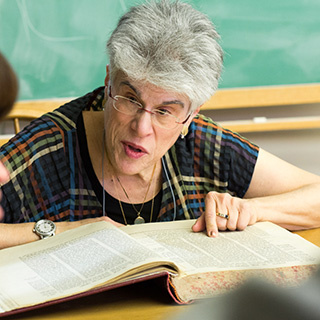Who Counts?

We all filled out census forms this year, as stipulated by the United States constitution. The closing date was March 31. My twin sons, who were born on March 30, 1980, were included in that year’s census as one-day-old babies. I sometimes joke that they burst out of the womb seven weeks early just so that they could be counted. The Bible, however, does not count children.
At the very beginning of Numbers (1:2), God tells Moshe to count all males from the age of twenty and up who can serve in the army (hence the book’s English name, Numbers). In Parashat Pinhas, God again tells Moshe, in very similar terms, to count all men (Num. 26:2). The first census took place in the second year after the exodus; the census of Parashat Pinhas is to take place in the fortieth.
Adriane Leveen, in Memory and Tradition in the Book of Numbers (Cambridge 2008), comments on these two censuses. Unlike many scholars who see Numbers as a haphazard collection of materials, Dr. Leveen sees it as a carefully edited volume with clear and coherent messages. The two censuses, she says, mark turning points. The first introduces a series of rebellions against God and Moshe. The second begins the transition from rebellion to redemption. The focus shifts, in Parashat Pinhas, from complaints about life in the wilderness to preparations to enter the Land.
Strangely enough, censuses elsewhere in the Bible are seen as dangerous, as exposing people to misfortune (J. Tigay, The Jewish Study Bible, 346). Mention of a census is first made in Exodus 30:11, where God says that whenever a count is taken, each man must pay a half-shekel as expiation money (kofer nefesh); that is, a sum of money to ward off the dangers of the census. At the very end of 2 Samuel, King David decides to count the people, with no divine mandate to do so and for no obvious reason. He is warned to abandon his plan by his general, Joab, but gives orders to count nevertheless. The chapter goes on to relate David’s punishment. Anxiety about direct counting persists to this very day with regard to a minyan. It is common to count ten Jews for a prayer quorum by pointing to each and saying, “not one,” “not two,” and so on.
Returning to Dr. Leveen’s argument that the second census begins a new period, we find, immediately following the census, the narrative about the five daughters of Zelophehad (Num. 27:1–11). The issue they raise is both legal and moral: since their father died in the desert, they say, and since he left no sons to receive a parcel of land, his name will be blotted out. They ask, therefore, to be allotted land so that they can keep their father’s name alive. Moshe does not know the answer to their question and turns to God who tells him to accede to the women’s request.
As the midrash notes, this is a case of women’s good qualities highlighting men’s shortcomings: the men lose faith in God and their ability to conquer the land; the women, who keep the faith, step right up and say, we will enter the land and we will inherit it. The second census foreshadows their actions by listing, in the midst of the clans, the names of Zelophehad’s five daughters (Num. 26:33) for no apparent reason, until one reads the next chapter.
The census makes another feminist point as well. Since women are not counted, it follows that they are not full-fledged players on the stage of ancient Jewish history. They thus cannot be blamed for any sins the people commit. It was not women who lost faith upon hearing the scouts’ report about the well-fortified cities (Num. 14:1–3), or who complained about the lack of bread and water (Num. 21:5), but men. Ironically, because men ignore the exploits of women, they leave women blameless. Hence women were not doomed to die in the desert, but could instead come forward and ask for portions of land.
So much for censuses of the past. Our contemporary attitudes toward taking a census, which are usually positive, are more in line with a point that Rashi, the great Bible commentator, makes (Num. 1:1, s.v. vay’dabber). He says that taking a census, like counting one’s children, is a reflection of caring and concern; of checking that they are all there and intact. Before moving on, a parent makes sure that no child is missing (shades of the film Home Alone). When we in the United States conduct a census of the Jewish population, we do so with trepidation. We hope to learn that our numbers are increasing in the post-Holocaust world, but we are also afraid of hearing that assimilation is on the rise. With the census tallies in hand, we can better allocate our funding of Jewish communal projects.
A postscript: I just returned from a month in Moscow where I taught Talmud at the Russian State University for the Humanities via JTS’s Project Judaica. My students, I found out, had either two Jewish parents, one Jewish parent, one Jewish grandparent, or no Jews in their family tree. So I asked a colleague, how large is the Russian Jewish population? He laughed at my naiveté. “We cannot count,” he said. “There is no easy way to define here who is a Jew.”




The publication and distribution of the JTS commentary are made possible by a generous grant from Rita Dee and Harold (z”l) Hassenfeld.